LOTUS SUGGESTED SYSTEMS #4
Kulaklık Modelleri ve fiyatları, en iyi kablosuz kulaklık, en iyi kulaklık
hificinema.co.uk
lotushifi.co.uk
oxfordaudio.co.uk
15/03/2024 08:30
Kulaklık Modelleri ve fiyatları, en iyi kablosuz kulaklık, en iyi kulaklık
ARTICULATE AVALON £71,515
For our fourth suggested system we have yet another two boxer. Later on in this series we will definitely get into some more extravagant and complex setups but as regular readers will already know, the low box count, small real estate system is something we really do specialise in. This is partly because it’s what the UK market demands but then it’s also partly because these days our Integrated amplifiers are so high performing that we do not advocate a pre-power or mono amplifiers until the customer has obtained a top level source and Loudspeakers, and also fully finished the system off with excellent cables, mains and isolation/resonance control systems. And this system will likely be fast approaching a very large amount of money so many customers simply never need to be looking at pre/power.
Many newcomers to Lotus are migrating from the best system from Naim or Linn, so Klimax electronics or 500DR series. All of our Integrated amplifiers here regardless of price are more transparent, more dynamic, more real sounding, more tactile and alive, more neutral and natural. That’s to start with though because once you furnish them with high end mains leads, support systems and cables, unlike a Linn or Naim system which can never really be improved by very much, the performance envelope of our electronics increases quite dramatically. Because the aural appeal of our equipment is not based around an inherent “sound signature” but rather, founded upon a low noise, high bandwidth, high transparency philosophy, when you open up the floodgates in the all the ancillaries around it, you tap into so much more extra ability.

PERFORMANCE MONITOR
The genesis for system number 4 was to base something around one of our most important products, the quite wonderful Avalon PM1.2 compact floorstander. We have been Avalon dealers for over 10 years and put many happy people into Idea, Transcendant, Indra and Compas models over that time. Those models though have since evolved into the performance monitor range and the PM1.2, now in mk2 guise, is most definitely one of today’s most popular products here.
The PM1 are a class looking act, relatively unfussy acoustically and very compact in size so they fit nicely into all sorts of smaller UK homes but then put them in a large room and they will just sound even better again. They possess all of the hallmark Lotus strengths: naturalness and tonal beauty, an unforced but dynamic and rhythmical delivery with good speed and strong palpable bass, impressive dimensionality with exceptional soundstaging, and a highly resolving reproduction but with a seamless and inconspicuous tweeter. Like all good loudspeakers they completely disappear when properly set up in a good system.
The PM1.2 are reasonably forgiving too so can be slotted into all sorts of setups but I am reminded of that wonderful art of driving a Caterham Seven around a racetrack – easy to drive fast but actually very difficult to shave off the very last half a second – ergo an Avalon will go to another place altogether if it is really optimised to the last n’th in an expertly designed system.
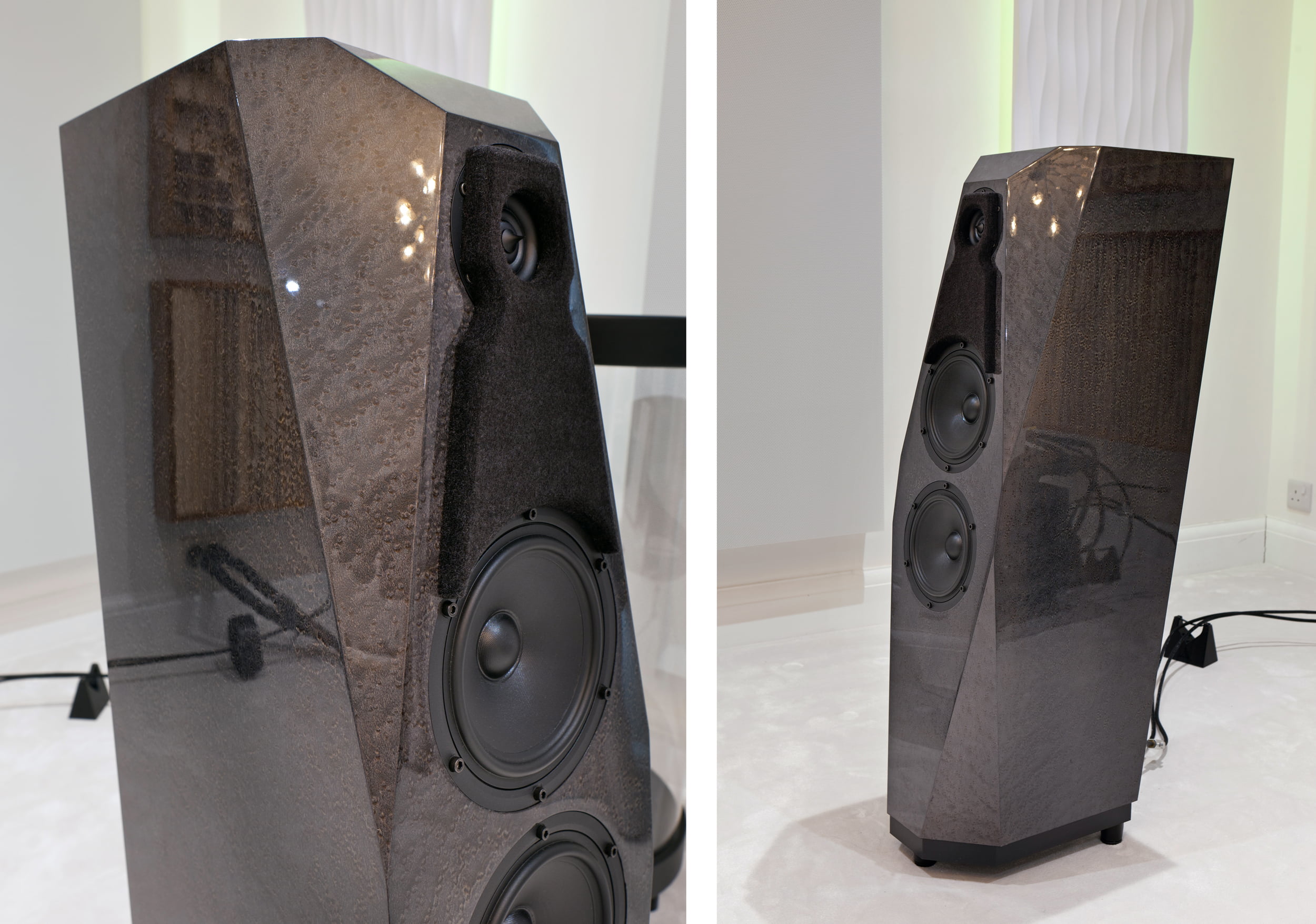
CHOOSING AN AMPLIFIER
The obvious pairing for a PM1 shod system would have been a Vitus dac and amplifier. This is the way we have traditionally sold many Avalons. It is one of our core longstanding recipies and for many years we counterbalanced the inherently smooth and leisurely character of both brands with ancillaries like Stillpoints to accentuate transient speed, precision and vitality, and Rick Schultz’s High Fidelity cables to ever so slightly sparkle the treble for a more extrovert and shapely top end.
With the Lotus portfolio today though, there is another obvious standout stablemate for the junior Avalons. Decades ago when the Colorado brand were represented in the UK by importers Audiofreaks, they were more often than not, paired with Conrad Johnson tubed electronics (LP275 and Art Stereo) and as anyone who heard those system will remember, it was a very special pairing. Although the best solid state gear these days generally negates the need for valves, there is no denying their appeal and a good tubed design can do some very attractive things to the musical landscape and Avalons do mate very well with tubes, just as long as there is accompanying power.
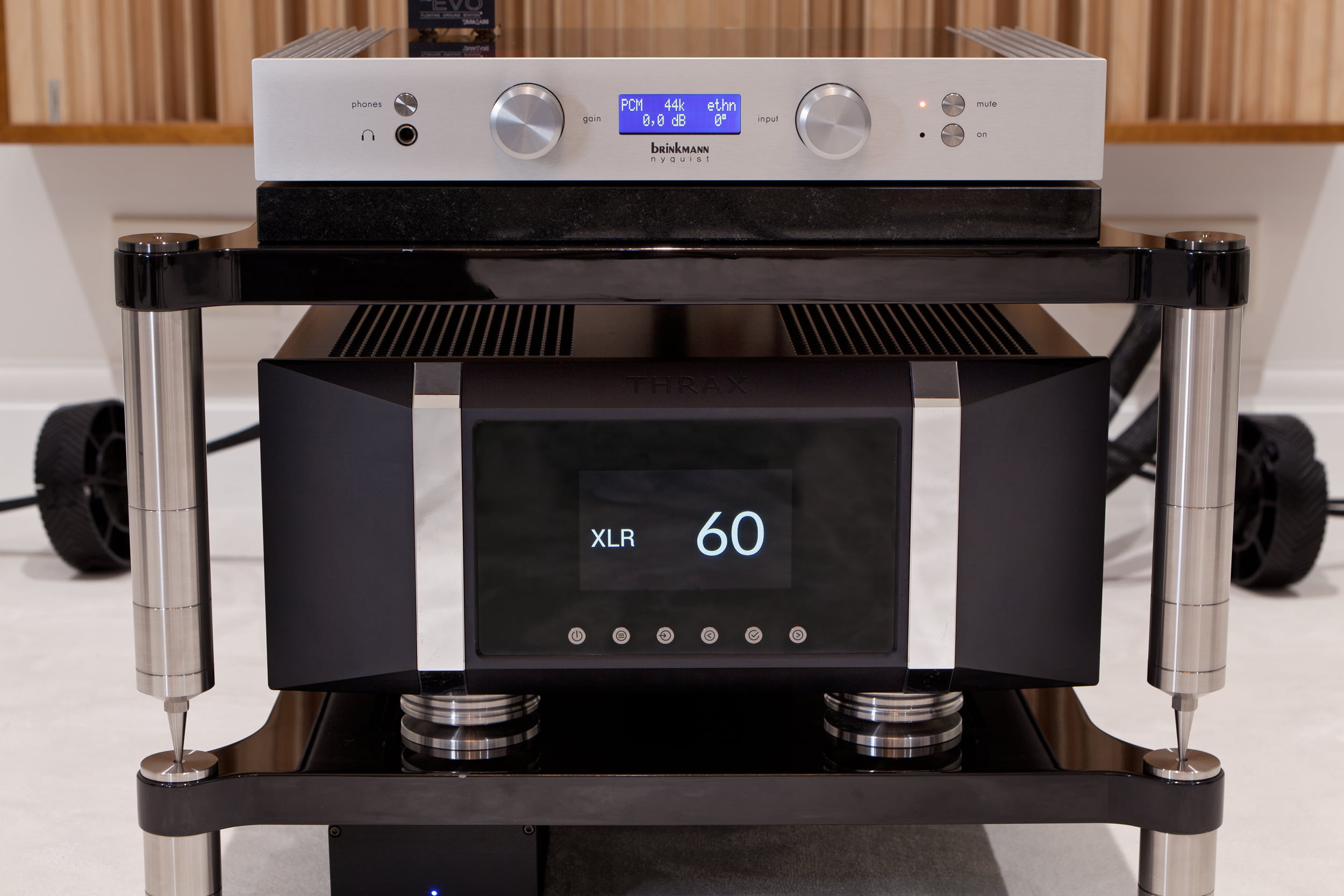
So for this system I could not resist pairing the PM1 with Thrax’s vacuum tubed Enyo integrated and what a happy marriage it turned out to be. The Enyo has proven a firm favourite here in the last 2 years, easily the equal of its transistor sibling the Ares or indeed any of the Vitus integrated offerings. For many customers it has been the outright pick of the bunch too and was only last year awarded by Hifi plus as the best tubed integrated amplifier of the moment.
The Enyo as Thrax unit already possesses that upbeat articulate character which I was after for this system. Secondly, it is an amplifier that majors in harmonic ability and the presentation of space and air within the music, both core tenets that are so crucial to the Avalon designs. Whilst its solid state brother the Ares is a whisker more neutral and pure, the Enyo counters with a very well judged dose of tube magic. It still sounds inherently neutral and if it was hidden from sight then one would be forgiven for mistaking it for a transistor amp, but in a lower build setup its extra added-in drops of texture, imaging and realism, go a long way in transforming the merely “very good” to something utterly magical.
Our previous system 3 was a genuine one box arrangement utilizing the inbuilt Vitus RI-101 Integrated DAC. Note that the Enyo can be similarly furnished so the system you see here could also start and stop with the Enyo for a saving of around £20,000. On my trials I did indeed listen to this combination and very successful it was too. The slot in Thrax Dacs give a superb performance for the £2900 cost and they can also be seen as a useful upgrade path as well – add a separate Dac when funds allow. But to stretch the ability of the Avalons some more and for variety too, I decided to add a bespoke dedicated DAC into this rig. Again, a Vitus RD-101 or SD-025 with inbuilt streamer would have been an obvious and a hugely successful choice at that, but I felt that the Enyo/PM1 pairing was also a really suitable foundation for Brinkmann’s superb Nyquist 2 Dac.
HIDDEN GEMS
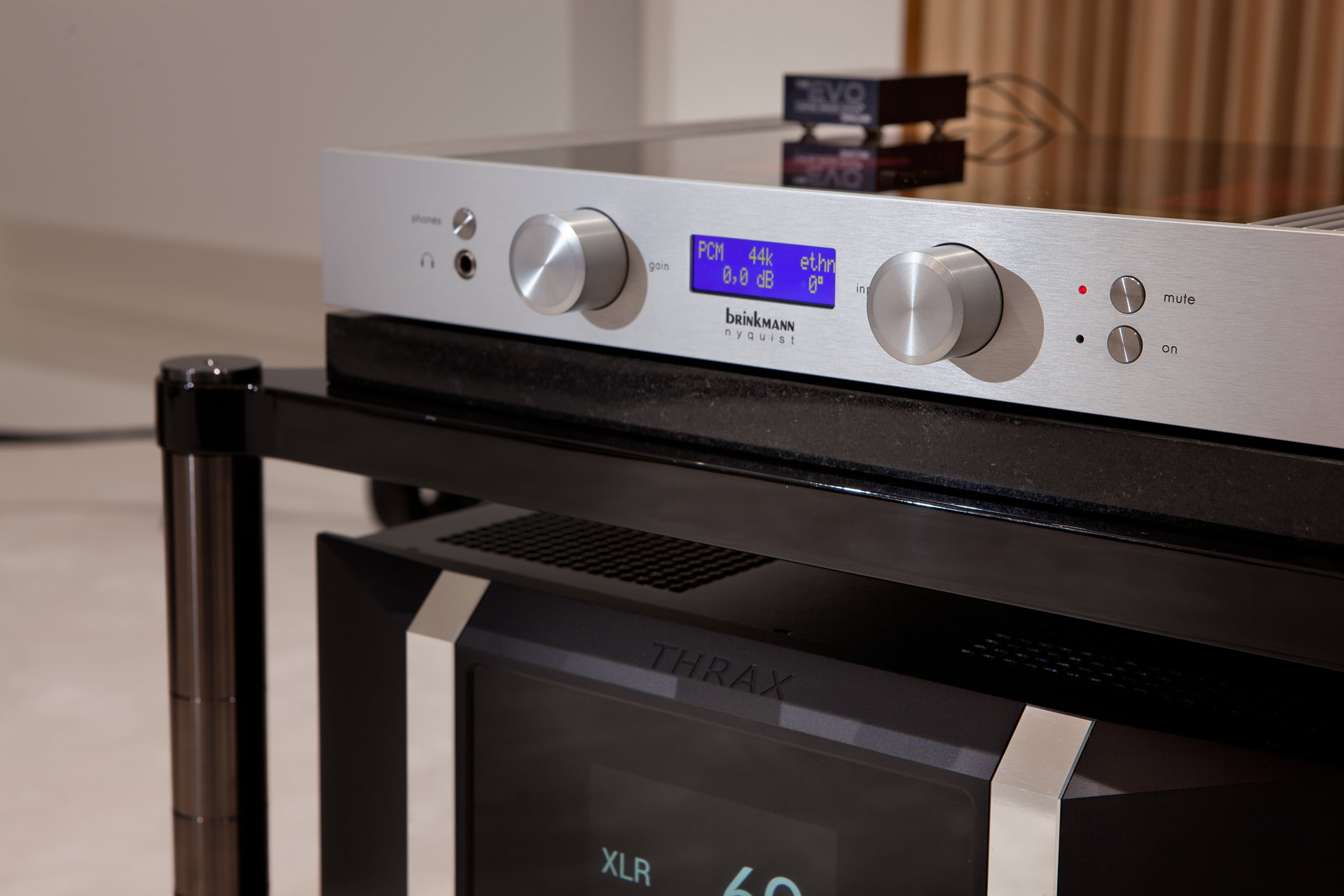
The Nyquist mk2 is a piece of gear that I have probably been a bit too reticent about in years gone by. We have always owned a demo and we always do well with it with a trickle of steady sales each year. I agree with all the superlative reviews its received since its birth in that its another exceptional piece of equipment and indeed, one that I have a genuine soft spot for. It has also always occupied a really sweet price point too; a small fortune cheaper than the price of the mega Dacs from the likes of Thrax and Tidal, but somewhere halfway between the Vitus reference and signature offerings.
How does it sound ? Well the comparison back to a Vitus DAC for example is an interesting one and perhaps a good place to begin the sonic description. Although the Brinkmann DAC sports vacuum tubes, it is actually Vitus digital which sounds more valve like with a whiff of bloom and warmth. Whilst an RD-101 or SD-205 has a smooth and slightly rounded presentation, the Nyquist is more akin to a baby Thrax Maximinus. That is to say it sounds very neutral and linear, it is really quite invisible in that sense, almost completely devoid of character. In addition, it does not have the polished velvety top end of the Vitus DACS but more of a traditionally biting and articulate treble. That’s not a warning that it strays into an analytical or bright presentation; never, it is still deliciously analogue and fluid in nature, but it feels extended and satisfyingly detailed in the upper registers. We are still happily somewhere in the middle of a wide presentational continuum though. Vivaldi and Rossini owners for example might well be wondering why the Nyquist is not even more giving when it comes to edge sharpness and the accentuation of soundstage and image location cues. Helmut Brinkmann then, like Vitus and indeed Rumen Atarski from Thrax Audio, has still prioritized musical completeness and comprehensibility over the very last atoms of resolution and ‘audiophile tinsel’.
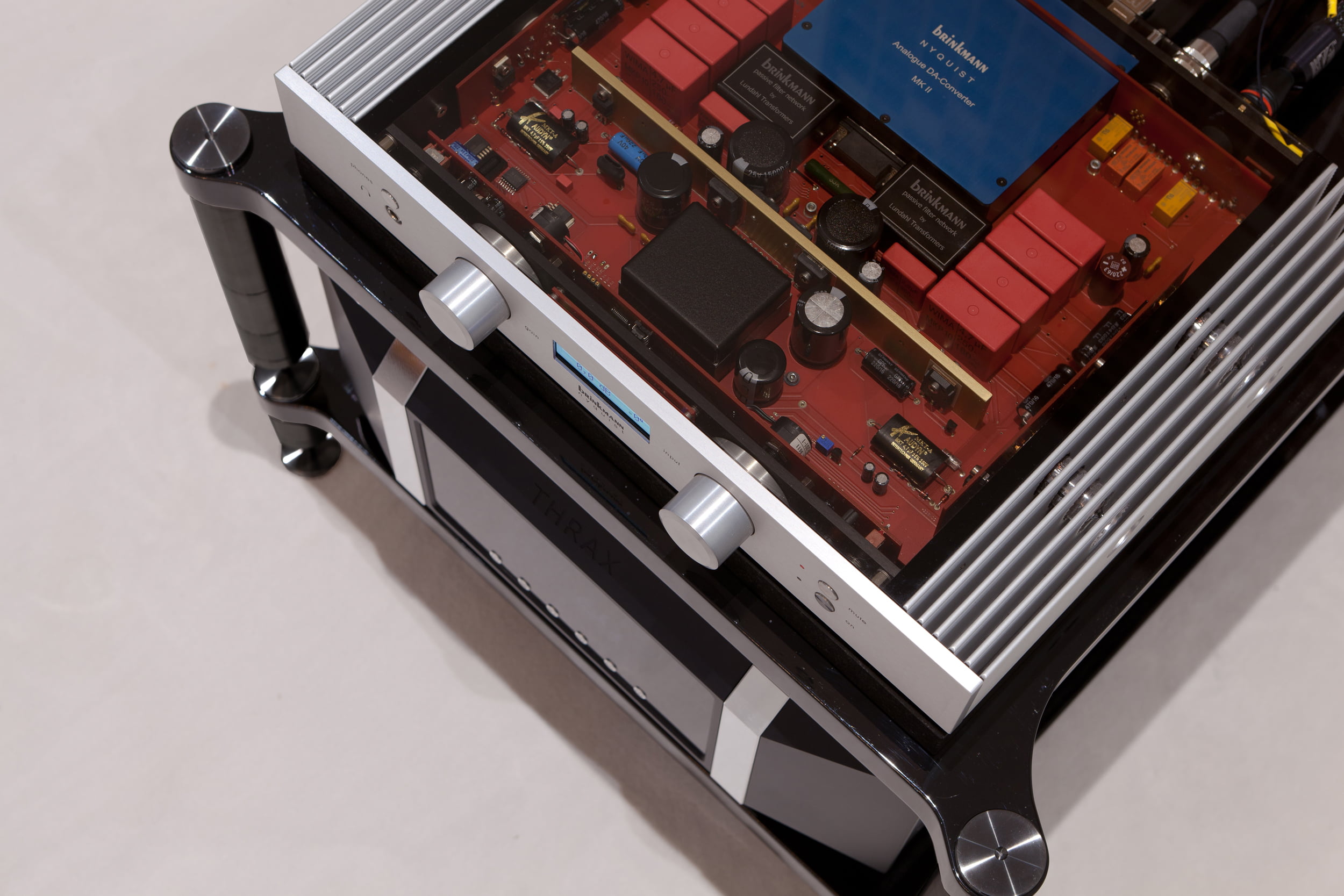
At £16,000 you would expect highly accomplished and senior league digital playback and that is exactly what you get. The Brinkmann is really not so far away from the big hitter Dacs from the likes of Lampizator, dCS, Vitus, Thrax, CH, TotalDAC, Soulution etc. as you might imagine. What your money also gets you is a product that is satisfyingly complete and feature laden. An onboard streamer with ethernet input, PCM up to 384 kHz/32 bits, DSD256, a headphone amplifier, gain and mute functions, a plethora of digital inputs and compatibility with Roon, Jplay, Audirvana and MQA. The build quality, fit and finish is absolutely first rate and it also looks superb in that smart and intelligent teutonic way, although in our pictures, would perhaps have been better in the more commonplace black finish to match the Enyo.
THE ALL IMPORTANT DRESSING
Let’s take a quick look at ancillaries before summing up. When I was crafting this system I began with an all Hemingway loom. The Hemingways have this unique ability to light up the music from within and pronounce it so meticulously in physical form into space. Their effect is a natural choice for Avalons given their exemplary skill when it comes to imaging, space and ambience. With their very high level of transparency and clarity they are a perfect choice for Thrax and regular readers will know that the brand partners with Thrax at all the major audio shows. I chose the second in the range Signature level Hemingways. The entry Indigo II represent a lofty starting point to the world of Hemingway but the Signature are a considerable jump up in performance terms and more commensurate with the high performance of the Enyo and Brinkmann.

After the speaker cables, my listening tests resulted in the appointment of a Tara Labs AIR evo interconnect between Dac and amplifier. The Tara Labs are equally as resolving and transparent as the Hemingways at a given price point but their presentation is possibly even more invisible with a slightly larger fatter delivery and a touch less outlining and focus. With the very well defined sound from the DAC and Enyo I found mixing the Tara XLR in gave a preferable sound, just a morcel of roundness and extra body although across a range of customers I imagine many would favour the complete Hemingway loom instead.
The Ethernet cable is critical and the first network upgrade we employ. The Shunyata Omega and Hemingway Z-core are the very best we have. They sound very different and in a good system they will alter the entire presentation one way or t’other; even the volume level changes between them. Their sonic styles really are as above, the Hemingway feeling more floated, pronounced and defined. The recording space definitely sounded a degree more real through the Z-core. The Shunyata wire sound slightly fuller, less upfront and more relaxed. In this build with so much detail and focus already in play, I felt the Shunyata was my marginal preference giving a slightly more diffuse and relaxed feeling to proceedings. With Vitus electronics you would absolutely choose the Hemingway.

I performed a similar tuning exercise on the mains cables as well and I ended up with a Shunyata Alpha NR on the Brinkmann Nyquist and a Tara Labs ONE on the Enyo. Both at similar performance levels, the ONE is a little more invisible as a mains cable and slightly more detailed sounding. The Shunyata gives a smoother, larger, more defocused sound with a tinge of warmth. It is fine tuning like this that really is so important at this level of equipment. For example, if you swapped the two mains cables around on both boxes, the resultant system would sound quite different again.
For support, the Nyquist already comes tuned to its supplied Brinkmann granite base. You can introduce footers into the equation but I elected to keep things as is. For the Enyo I used Stillpoints Ultra 6 to juice out as much energy and dimensionality from the amp as possible and underneath Avalons Stillpoints are pretty much mandatory, adding so much to the final speaker ability. I elected to use the cheapest Ultra SS mated with screwed adapters into the PM1 bases.
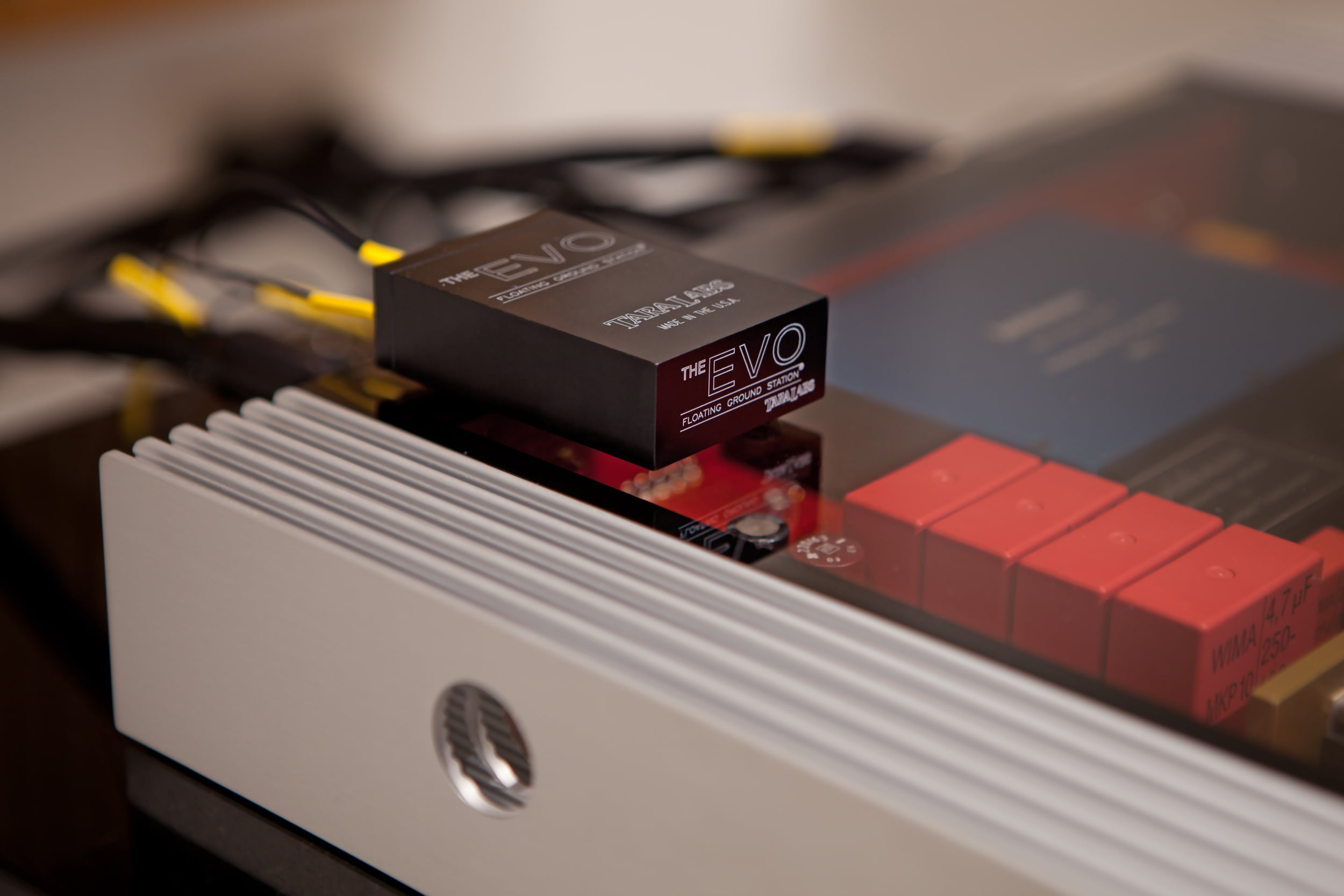
HOW DOES IT SOUND
What we have done here is maybe raise the performance of the PM1 to something different. Gone is the easy going Avalon smoothness and homogeneity typically encountered, and in its place, a remarkable degree of life, separation and sonic vigour. This system does not attempt to gentrify the music. Rather, everything tingles with detail, intent and expression. You can so clearly hear right back through the music in all directions and there isn’t a grain of artifice or system generated sound that isn’t on the recording.
All your music is full of internal power; every note, instrument, every chord strike and guitar pluck feels full of energetic potential and a sense of physical stability, seemingly laden with the ability to leap out at you at twice the volume at any moment.
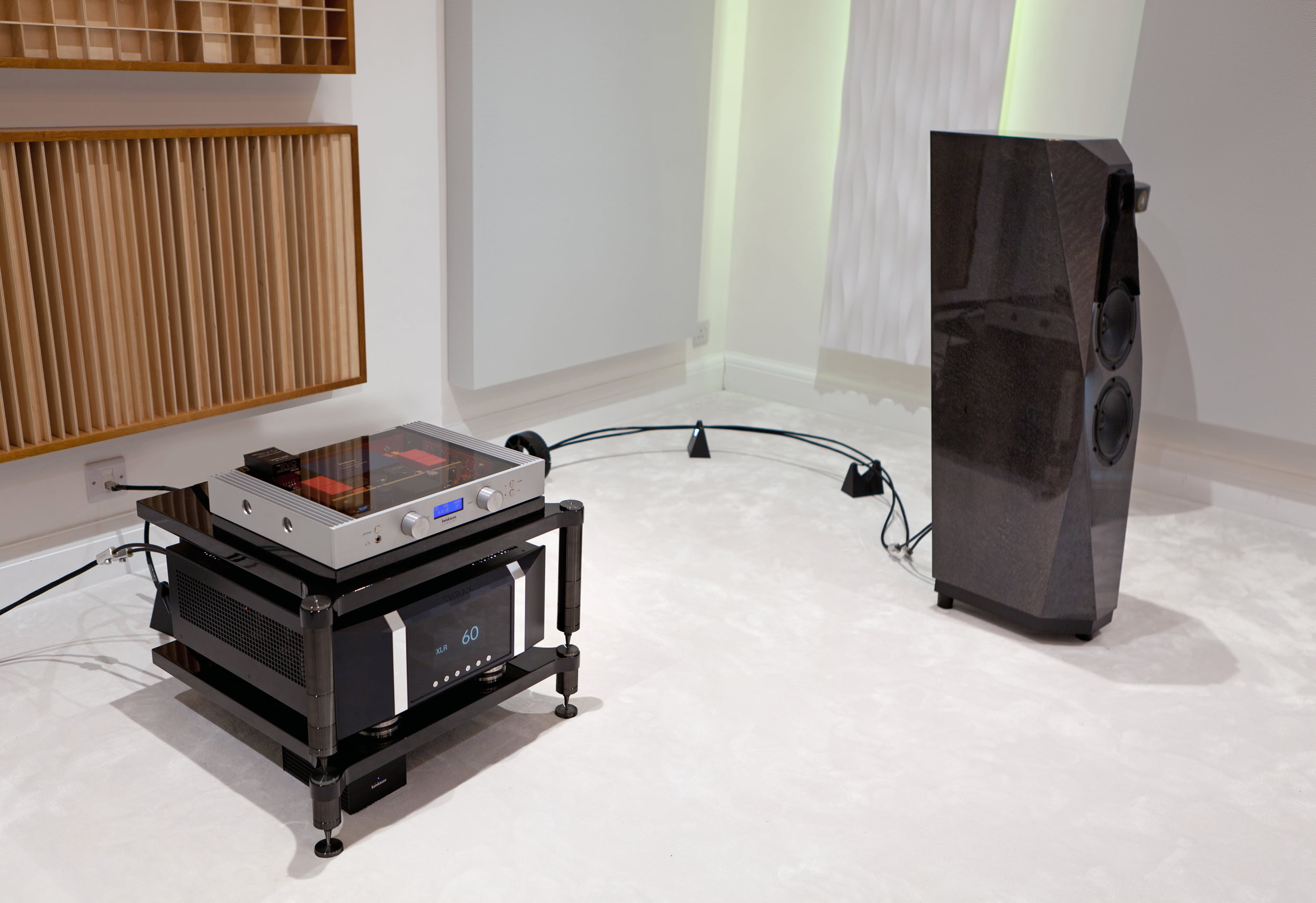
Do not be misled by the glass tubes in the amp, this system sounds grainless, pure and beautifully see through and a feeling of sheer dynamic muscle and authority more often associated with solid state amplification, permeates the whole sonic picture. People sometimes refer to the word pressurisation and this is something that is particularly apt here. Largely because of the Thrax voicing and the high quality wires and the Stillpoints, this system is bursting at its extents, the music almost a physical force pushing against the room. This is in part what makes it such an engaging and vivid combination. On more restful and gentle music however, it sounds as intimate and delicate as you would ever want or indeed expect from an Avalon based system.
So you might be pleased to learn then that all of the Avalon strengths are retained in spades. Gorgeous timbres and textures on brass, woodwind and strings, superb capacious soundstaging and front to back depth, and then the famed Avalon coherency from top to bottom; music is unravelled and organised before you in such a coherent, unhurried and well ordered fashion. There is also still a welcome dose of warmth, not the coloured turgid kind but just a tilt toward a more organic human delivery.
Another neat 2 box system then. The developments in DACs, cables and the Network over recent years means that this system has an extraordinary level of ability for its simplicity. I suspect that for most newcomers to Lotus and to high end equipment, it would represent a final sound. It nails all genres of music and will delight the folk who tend to gloat most over tonal beauty and artistic expression but then simultaneously satisfy the pop and rock and classical merchants who want dynamic drive, authority, power and the systems ability to stop and start so quickly and avoid the collapse of soundstage, tonality and space when the music becomes particularly congested.
SONIC TAILORING
Hemingway to Tara, Stillpoints to HifiStay, Z-core ethernet to Shunyata ethernet. All of these will represent a tune from the focused, the pronounced, the explicit and the immediate, to a presentation a little more rounded, homogenous and casual. We have elected to have a good mixture of each here but for any particular customer and musical taste, the system could be very powerfully shifted in either direction. Nearly all pieces of electronics and speakers can be defined across the generalist sonic parameters of soft to sharp, laid back to forward, homogenous to skeletal and whilst these properties aren’t really sound quality in themselves, they are hugely important in crafting a final recipe that makes the customer happy and suits his ears.

UPGRADES
Like most of my systems this is a very straightforward one to upgrade whilst still retaining exactly the same sound. The mains cables can jump to Muse and Sigma, a mains Shunyata conditioner can be added and the wires can be upgraded to Z-core and then ONE or 0.8 in the Tara Labs catalogue. There is enough sheer resolution in the DAC and amplifier to really push the wires several stages upwards.
Probably the first thing I would do though is improve the network is Qobuz and Tidal streaming was indeed the main source. A Melco switch, ADOT MC03 fibre kit would be the next steps. This improves the very source itself before it even reaches the DAC, meaning any other upgrades will be more meaningful again.
In terms of boxes, the next thing I would do is upgrade the PM1.2 to the new PM2.2. The same sound exactly but more scale, size, weight and drama. Look out for these beauties in a future suggested system. I would look to swap out the Stillpoints SS under the speakers for a set of Ultra5 as well. Expensive but improvements you can make to the loudspeaker are always standout.
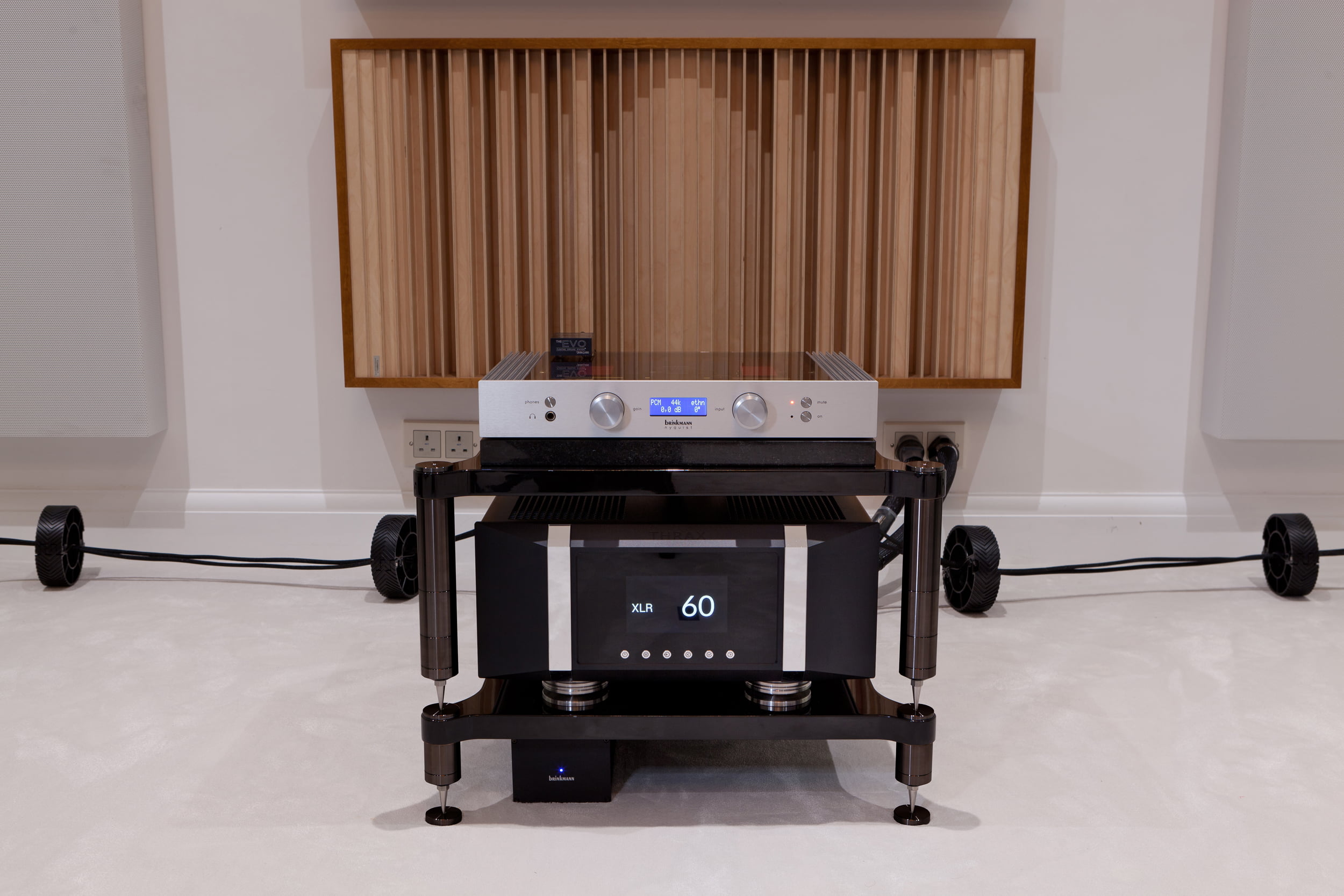
PLAYING FILES
So far in all suggested systems we have left out a hard disk player. This is partly because so many people want to stream and put their money therefore into cleaning the home network rather than optimising the noise in a hard disk. All of the systems so far though can easily be furnished with the ability to play WAV files by simply adding a Melco server. Many customers already own a Melo or similar device though and there are many competent units in the market all of which are perfectly viable options – Auralic, Lumin, Innuos, Antipodes etc. One point I would like to strongly underline is that if using a device such as this, then the digital connection, which is usually USB, is absolutely paramount. It becomes equally as important as the DAC or the Server/Streamer itself as we shall see in another future suggested system.

Avalon PM1.2, £21,750
Brinkmann Nyquist mk2, £15,995
Thrax Enyo, £12,500
Hemingway Signature + Tara Labs AIR, £8,795
Tara Labs ONE AC + Shunyata Alpha NR, £4,495
Stillpoints Ultra 6 x3, Ultra SS x6, £4,980
Shunyata Omega ethernet, £3,000
System Price, £71,515
The post LOTUS SUGGESTED SYSTEMS #4 first appeared on lotushifi.